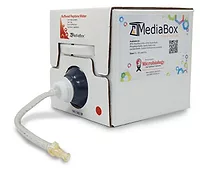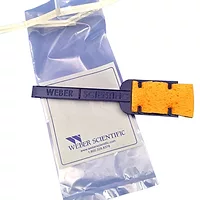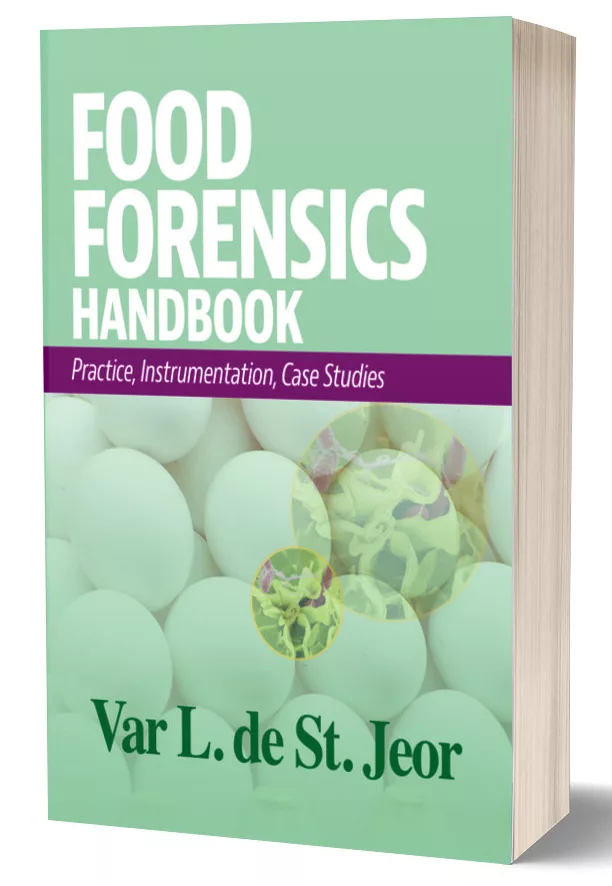Microbiology Made Easier: A Quick Guide to Easygel™ Media

Because they eliminate the many steps required to prepare dehydrated culture media, convenience methods like Easygel media, distributed by Weber Scientific, have become a standard for saving the food industry time, labor and money in their microbiology work. A significant portion of labs have adopted this method, as it unquestionably provides a faster, simpler alternative to the standard method.
This technology provides a clear, easy way to quantify a variety of different bacteria in environmental samples, from yeasts and molds to coliforms. The results are used to measure everything from the cleanliness of the production site to the purity of the finished product.
One of the primary concerns when adopting a new product or method is whether the product in question meets regulatory standards to which a lab must conform. Easygel’s Standard Plate Count and Violet Red Bile plates are AOAC-Official Methods of Analysis and American Public Health Association (APHA) approved. The majority of the other Easygel formulations contain ingredients that are identical to widely recognized and accepted agar-based media formulations.
Materials & Technology
Easygel, in technology and procedure, very closely resembles the standard method. This is because the method simply replaces traditional seaweed-based agar with the gelling agent pectin in order to create a liquid medium that can be stored and poured at room temperature and sustained for a 1-year shelf life. The gel that forms with pectin is virtually indistinguishable from the gel that forms with traditional agar.
Like the traditional method, Easygel uses a standard size 100 × 15-mm Petri dish. The dish is pretreated with a layer of calcium ions that diffuse when they interact with the medium, causing the medium to gel in about 40 minutes. Easygel is packaged in kits that contain one bottle of liquid medium and one pretreated Petri dish. For several varieties of media, the bottle of liquid medium must be stored refrigerated or frozen, while others can be stored at room temperature. All Easygel Petri dishes can be stored at room temperature.
Technique & Reading
The technique to use Easygel very closely resembles that of the traditional pour-plate method. Lab technicians who already know the standard method will only have to familiarize themselves with one exception in the technique in order to use Easygel.
Unlike the pour-plate method, where the sample is added to the plate and then hot agar is swirled in, the Easygel sample cannot be added to the dish first. Instead, one of two techniques can be employed: Add the medium to the plate and then swirl in the sample, or swirl the sample into the medium bottle, and then pour the mixture onto the plate. This simple exception is the only deviation from the standard method, ensuring that technicians switching from the standard method to Easygel will have to cope with almost no learning curve. As the materials and process are nearly identical to the standard method, results with Easygel are similar—if not easier to read—than results with the standard method.
“I’ve heard that because Easygel gives a 1:5 dilution, it can be easier to count,” says Fred Weber, president of Weber Scientific. “It would be tougher to use a film-type method for the finished product. It’s easier to read the plate because there’s a larger surface area.”
Sharon Wilson, senior national account manager, agrees. “There’s a much bigger surface area. If you have a higher count, you’re going to be able to count it with Easygel. Sometimes with a 1-mL film plate, that high count can get obscured.”
To make Easygel plates easier to read, lab technicians can use an automated plate reader. Plates are not limited to a specific machine and can be read on any commercially available automated Petri dish counting system. However, it is not a feasible addition to all labs.
Easygel plates are categorized by the agar they are based on, with popular varieties including MRS, Orange Serum, Potato Dextrose, Standard Plate Count and Violet Red Bile, among others.
Another Option
Coliscan™ also uses the Easygel media platform and is U.S. Environmental Protection Agency approved for investigations of Escherichia coli and other coliforms. It incorporates a patented combination of color-producing chemicals and nutrients that mark coliforms and E. coli in differing colors for easy identification and isolation. This means that a test sample of water or other material may be added to the medium, and coliform bacteria will grow as pink-magenta colonies while E. coli will grow as purple-blue colonies. Other bacterial types will generally grow as noncolored colonies.
Again, Coliscan is ideal when a sample size of 1–5 mL is appropriate, such as samples where there is generally a sizable population of coliforms and/or E. coli. The sample can be added directly into the bottle of Coliscan Easygel, swirled, poured into a pretreated Petri dish and incubated. Incubation temperature is not critical, and under warm conditions (32–37°C), the results can be read in 24–28 hours. The media is stored frozen.
Looking for quick answers on food safety topics?
Try Ask FSM, our new smart AI search tool.
Ask FSM →








